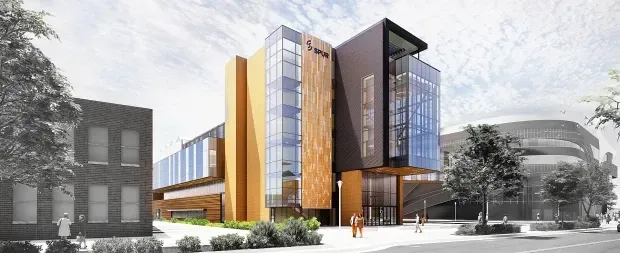Q: Tell us about your organization: Why it was created; who, in general, make up its membership; whom do you serve; and what is your mission?
A: The Maryland Business Roundtable for Education (MBRT) is a 501(c)(3) organization created in 1992 to serve as a non-profit bridge between the employer and educator communities in Maryland. Members over the years have included leading corporations, small businesses and manufacturers, universities and community colleges and like-minded associations or similar non-profits.
Q: How, if at all, has your mission changed through the years and why? What other ways has the organization, its membership and service area changed and/or grown?
A: Though the heart of our mission – ensuring a successful future for employers and students – remains unchanged from our founding, the nature of our work has evolved in large part due to the change in priorities and focus of several significant partners over the years.
For example, during Race to the Top legislation (~2010-2014), federal support provided MBRT with substantial resources to advocate for high academic standards, convene partners around critical educational topics, and provide services to local school districts.
A more recent state program, Next Generation Scholars, allows us to target districts with the greatest need with direct student support to help them discover a variety of college- and career-ready pathways. Its latest report can be found
here.
Q: How do you carry out your mission?
A: Two groups of talented professionals allow us to fulfill our mission. One involves a trained, volunteer workforce of several hundred dedicated employees who represent their companies while visiting (or virtually connecting with) thousands of middle and high school students throughout Maryland.
The second team is our own staff of approximately a dozen career educators and non-profit professionals: half work from a headquarter office near Baltimore to accomplish the day-to-day tasks of running a non-profit, while the other half serve as local school coordinators and live and work in more rural areas of our state, positioned daily in one or two school buildings in their districts.
Q: Tell us about your programs, including Maryland Scholars and Next Generation Scholars Program and others, and your publications.
A: The mobile application, Way to Be, is a companion to our print resource of the same name. Both resources provide college and career guidance, but the app was created to provide a unique and engaging digital experience for those digital-first middle and high school students.
Our Next Gen program is best summarized in the report link provided above.
Q: What have been your organization’s most impactful advocacy achievements? What have you learned from your successes – and missteps?
A: MBRT during its first two decades was instrumental in pushing for and securing state school board votes specific to rigorous standards, curriculum, instruction and assessments. In addition, our executives and board members have served key roles on more than a dozen state workgroups or commissions. Typically, each success or experience has broadened our network and strengthened our staff’s knowledge and skills, and those partners engaged in these important initiatives.
Q: What advice would you give other groups that have similar missions?
A: Three suggestions:
- Pilot ideas before enacting full-scale, statewide projects.
- Delegate and seek sub-allocation funding for partners who can enhance and soften the workload of a large grant or commitment.
- Seek and secure more significant funding for the communication and marketing aspects of statewide work, as telling the story requires sustained planning and professional staff who can remain visible externally while an organization ensures the day-to-day work is getting done.
Q: Tell us about STEMnet and your organization’s involvement in this network.
A: In 2009, the Governor's STEM Task Force, co-chaired by then-University System of Maryland Chancellor William Kirwan and June Streckfus, who founded the Maryland Business Roundtable for Education, released their final report.
One of the recommendations pointed to the creation of a STEM Innovation Network (STEMnet) to enhance communications across all stakeholders; build the state’s capacity to maximize the effects of existing programs and policies; and facilitate the review and revision of Maryland’s strategy for its STEM education, research and workplace.
As a result, in 2011, MBRT launched the STEMnet platform that featured a library of STEM lesson plans and challenges created by master teachers while also providing educators with the ability to call upon a vast group of STEM volunteers who were trained to join them in classrooms and help students connect classwork and the real world.
Q: What role do businesses and volunteers play in your programs?
A: They are essential, as referenced above. Students have provided us with anecdotal and quantitative data for many years that capture the very positive impressions and impact our employer community makes when it dedicates its time, talent and treasure in support of young people and their schools.
Q: How did the pandemic change how you carry out your mission? What lessons did you draw from this experience?
A: As an organization, we were very fortunate. However, the extent of how the COVID-19 pandemic has impacted our students might be felt for generations to come. These unprecedented events represented an opportunity for us to reaffirm our mission and demonstrate the urgency of supporting Maryland’s community of learners and their families, especially during the past year.
Our staff, volunteers and partners represented a lifeline helping to keep those at-risk students on track and prepared for life after graduation for those communities with the greatest need.
Traditionally, the execution of our programs has relied on our ability to deploy volunteers directly into classrooms throughout the state. However, like most organizations these days, we have had to rely on tech solutions to virtually get in front of students. We also shifted to developing more video content that students could consume on their own devices and at their own pace.
As an organization, we learned many valuable lessons during the past year that will continue to shape our work throughout Maryland. Embracing change and pivoting quickly both helped us work through major issues and identify pathways where our work could still be relevant to students struggling with virtual learning.
We also communicated early and often with all our funders, partners, school officials and students/families – both to inform them of our needs and limitations and to explore ways that MBRT might be able to assist them with their own COVID-related challenges.
Q: Is there anything else you would like to share about the MBRT?
A: This organization looks forward to aligning with other states in an effort to advance STEM education in our country.





